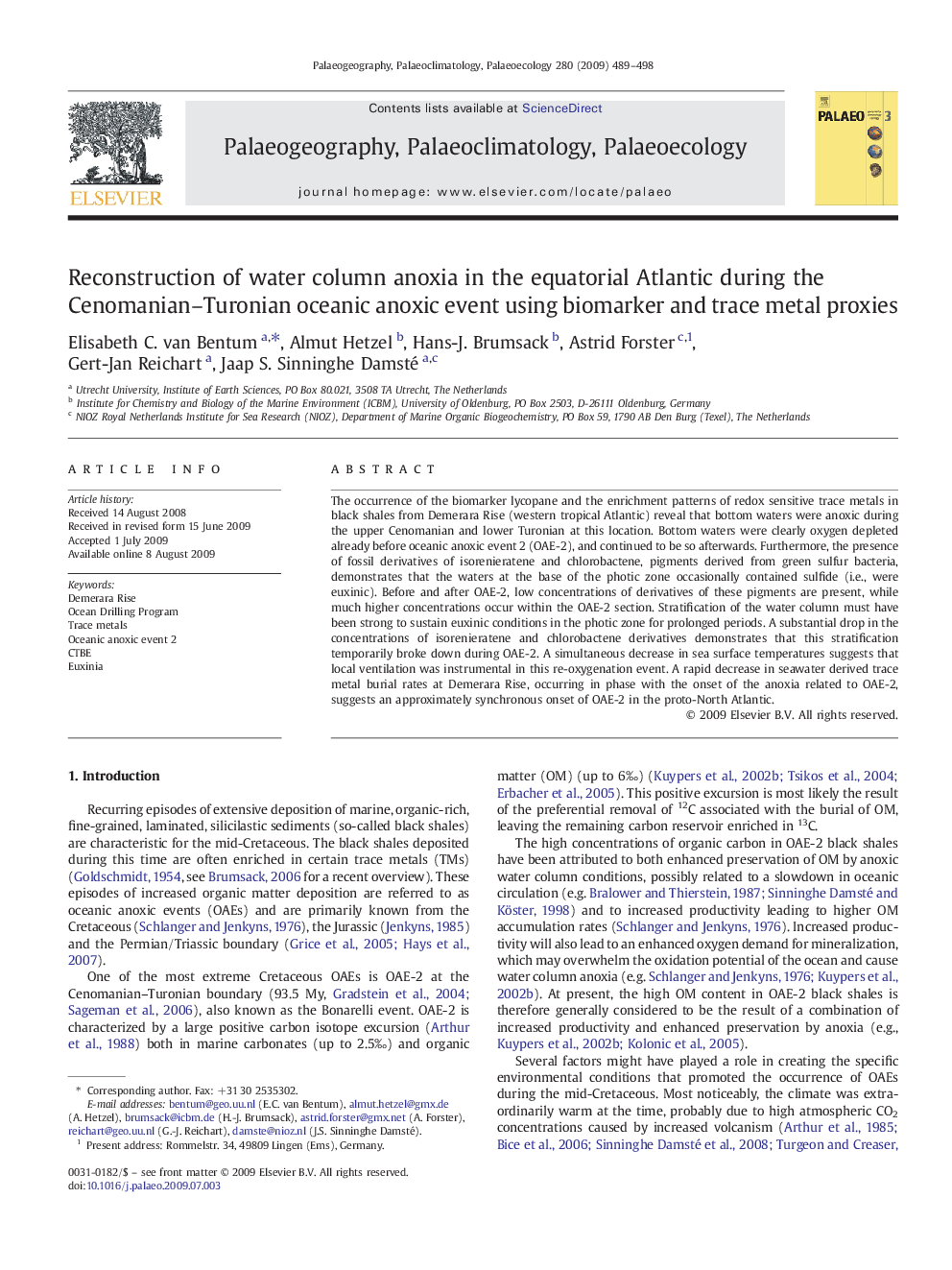| Article ID | Journal | Published Year | Pages | File Type |
|---|---|---|---|---|
| 4468007 | Palaeogeography, Palaeoclimatology, Palaeoecology | 2009 | 10 Pages |
The occurrence of the biomarker lycopane and the enrichment patterns of redox sensitive trace metals in black shales from Demerara Rise (western tropical Atlantic) reveal that bottom waters were anoxic during the upper Cenomanian and lower Turonian at this location. Bottom waters were clearly oxygen depleted already before oceanic anoxic event 2 (OAE-2), and continued to be so afterwards. Furthermore, the presence of fossil derivatives of isorenieratene and chlorobactene, pigments derived from green sulfur bacteria, demonstrates that the waters at the base of the photic zone occasionally contained sulfide (i.e., were euxinic). Before and after OAE-2, low concentrations of derivatives of these pigments are present, while much higher concentrations occur within the OAE-2 section. Stratification of the water column must have been strong to sustain euxinic conditions in the photic zone for prolonged periods. A substantial drop in the concentrations of isorenieratene and chlorobactene derivatives demonstrates that this stratification temporarily broke down during OAE-2. A simultaneous decrease in sea surface temperatures suggests that local ventilation was instrumental in this re-oxygenation event. A rapid decrease in seawater derived trace metal burial rates at Demerara Rise, occurring in phase with the onset of the anoxia related to OAE-2, suggests an approximately synchronous onset of OAE-2 in the proto-North Atlantic.
